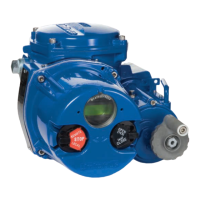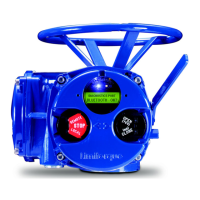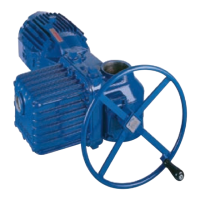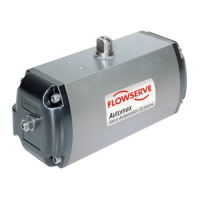Limitorque QX Electronic Actuator FCD LMENIM3306-06 – 07/14
94
Position: Principal Product Portfolio Manager
7.1 Specific Conditions for Use — Atex/Cenelec/IECEx Applications
Atex/Cenelec/IECEx certification of the QX product line is described in Certificate of Conformity. This certificate details
specific construction requirements that must be met in order to maintain the XP integrity of the actuator. The socket-
head cap screws used with the QX electric valve actuators shall conform to the following requirements:
The “X” suffix to the Certificate number relates to the following specific conditions of use.
1. ISO Class 12.9, M8 socket-head cap screws (Yield Stress 1100 MPa) shall be used to replace the terminal, control,
or motor compartment fasteners of actuators marked with TAMB < -20°C or for all Group IIC actuators.
2. Stainless steel, A2 or A4, ISO Class 70, M8 socket-head cap screws (Yield Stress 450 MPa) shall be permitted
as an alternate to the ISO Class 12.9 socket-head cap screws on the terminal, control, or motor compartments of
actuators marked TAMB ≥ -20°C.
3. Consult the manufacturer if dimensional information on the flameproof joints is necessary.
7.2 Statement of Compliance with Applicable European Directives
We, Flowserve Limitorque, 5114 Woodall Road, Lynchburg, VA, USA 24502, as the manufacturer of the equipment
listed below:
QX-1, 2, 3, 4, 5 electronic valve actuator. The QX is a non-intrusive electronic actuator. It
is specifically designed for the purpose of being mounted to a quarter turn valve (or other
apparatus) in order to move the valve from fully closed to fully open.
Confirm, in accordance with the requirements of clause 1.2.7 of the Essential Health and Safety Requirements
of Community Directive 94/9/EC on equipment and protective systems intended for use in potentially explosive
atmospheres that the above equipment has been designed and manufactured to:
a) Avoid physical injury or other harm which may be caused by direct or indirect contact;
b) Assure that the surface temperature of accessible parts or radiation which cause a danger, are not produced;
c) Eliminate non-electric dangers which are revealed by experience;
d) Assure that foreseeable conditions of overload shall not give rise to dangerous situations.
And where these risks are wholly or partly covered by other Community Directives, the equipment satisfies the
requirements of those specific Directives.
And that literature describing the equipment will not contradict the instructions with regard to safety aspects.
Issued on: 16 October 2011
Authorized by:
Name: Earnest G. Carey, Jr.

